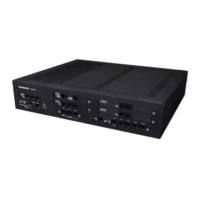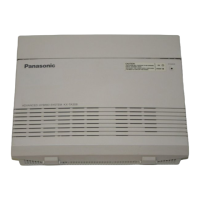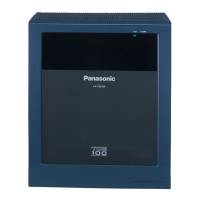DSP Resources
DSP cards provide digital signal processor (DSP) resources, and the PBX uses the resources to perform
various PBX operations. The following illustration shows the concept of DSP resource usage. More complex
situations may require additional resources, and in some cases the amount of DSP resources required may
be less than expected.
Conference
0.5
Outgoing Message
(DISA)
*3
2
1
Music on Hold (MOH)/
External Paging (EPG)
*3
1
Internal MOH
*3
Unified Messaging
1.3
PBX
Doorphone
*2*4
3
1
Analogue
Trunk
*2*4
2.2
G.729A
G.711
1
IP Trunk
*1
2.2
G.729A
G.711
1
IP-PT
1
SLT
*2*4
1
PRI/E1
*2*4
: Required DSP Resources
UM Tone Generator
2
Echo Canceller
*3
3
2.2
G.729A
G.711
1
IP-CS
PS
DPT/APT
*2*4
1
*1
Connections that arrive over a stacking connection require the same amount of DSP resources as shown in this example.
*2
DSP resources are used during conversations between legacy trunks/extensions/Doorphones and IP trunks/extensions.
*3
DSP resources are used when IP trunks or IP extensions access these devices.
*4
DSP resources are not used during conversations between legacy trunks and legacy gateways.
Required DSP Resources Assessment
The maximum
number of simultaneous calls, operations and features using IP protocols is determined by the
DSP card installed in the PBX.
To decide how much resources are required for the PBX, the DSP Resource Advisor can be useful.
Installation Manual 55
2.3.3 System Capacity

